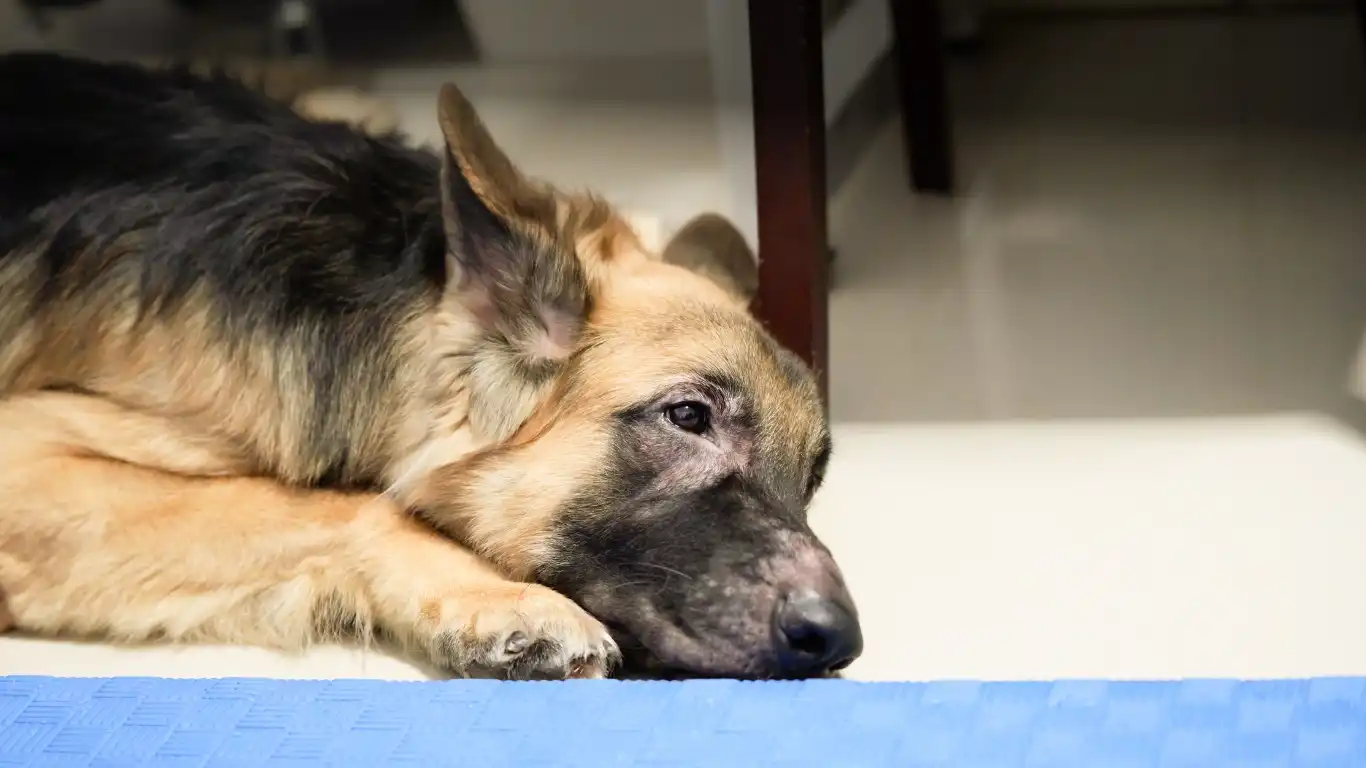How to Help a Dog With Seasonal Allergies Naturally and Effectively
When pet parents ask me how to help a dog with seasonal allergies, I totally get where they’re coming from—because I’ve been there, both as a vet tech and as a dog mom. Seeing your pup constantly scratching, licking their paws raw, or sneezing like they’re allergic to life itself? It’s stressful for both of you. And here’s the thing: seasonal allergies in dogs aren’t just about the occasional sniffle. They can seriously affect quality of life. But the good news? There are plenty of things we can do to ease their discomfort—naturally, holistically, and yes, medically when needed. So let’s dive in and talk about the stuff that actually works—things I’ve seen firsthand in the clinic and in my own home.
Understanding the Root Cause of Your Dog’s Seasonal Allergies

What Are Seasonal Allergies in Dogs?
Seasonal allergies in dogs—also known as atopic dermatitis—are allergic reactions to environmental triggers like pollen, mold spores, grasses, and even dust mites. Unlike humans, who often sneeze and get watery eyes, dogs tend to show symptoms through their skin and coat.
From my experience, the most common signs that your dog’s dealing with seasonal allergies include:
- Itchy skin, especially around the face, ears, belly, and paws
- Red, inflamed skin or hotspots
- Excessive licking or chewing at the paws
- Chronic ear infections or shaking of the head
- Thinning fur or bald patches
It’s super important to note that these symptoms can overlap with other conditions (like food allergies or fleas), so getting an accurate diagnosis is key. And no—just changing kibble blindly won’t cut it (trust me, I’ve seen that mistake too many times in the clinic).
Why Your Dog Might Be More Sensitive Than Others
Some breeds are more predisposed to allergies than others. Think Pit Bulls, Frenchies, Retrievers, Terriers, and Boxers. But even mixed breeds can be affected. I once worked with a sweet little rescue mutt named Daisy—her mixed heritage didn’t spare her from springtime misery. Genetics play a role, but so does environment, gut health, and even early nutrition.
How to Help a Dog with Seasonal Allergies—Right From Home

Start with Bath Time: Less Itch, More Relief
I always tell clients, “If you do nothing else—bathe your dog regularly.” Seriously, just like we wash off pollen from our skin and hair, dogs need that too. And no, you don’t need some fancy spa-level shampoo. But do use a vet-recommended, hypoallergenic formula with oatmeal or aloe. Look for ones labeled for itchy or allergy-prone skin.
- Use lukewarm water (not hot—heat makes itching worse)
- Leave the shampoo on for a few minutes before rinsing
- Rinse thoroughly—leftover shampoo residue can actually irritate skin
Pro tip? Follow up with a conditioner or a spray-on moisturizer. In my practice, I’ve seen dogs go from itchy mess to zen-level calm with just a few weekly baths.
Wipe Those Paws—Every Time
This one’s a game changer. When your pup comes inside from a walk, their paws are basically little sponges for allergens. I keep unscented, hypoallergenic baby wipes by my door and give my dogs a quick wipe-down after every outing. You can also use a damp cloth or even rinse their paws in a shallow bowl of warm water. It’s such a simple routine, but it makes a big difference.
Boost Their Immune System from the Inside Out
This is where my nutrition background comes in. What your dog eats has a huge impact on how their body reacts to allergens. A strong immune system is better at handling environmental triggers without going haywire. So what should you feed?
- Omega-3 fatty acids: Think fish oil or flaxseed oil—these reduce inflammation and help skin stay healthy
- High-quality, limited-ingredient diets: Avoid unnecessary fillers and potential food allergens
- Probiotics: Support gut health, which is directly tied to immune function
One of my patients, a Golden Retriever named Milo, used to get horrible rashes every spring. After switching to a clean, omega-rich diet and adding a probiotic supplement, he had his first allergy season with almost no flare-ups. That’s no coincidence—food is powerful medicine.
Work with Your Vet (But Be Prepared)

Get a Diagnosis Before You Guess
Honestly, one of the biggest mistakes I see pet parents make is assuming. Assuming it’s food. Assuming it’s fleas. Assuming they can fix it with coconut oil (spoiler: please don’t). Before you dive into treatments, talk to your vet or veterinary dermatologist. They can help rule out other causes, do allergy testing if needed, and help you form a long-term plan.
It’s not about throwing meds at the problem. It’s about figuring out your dog’s unique triggers and building a customized approach that works for them.
Allergy Medications for Dogs: When Natural Remedies Aren’t Enough

Let’s Talk Antihistamines (And Why They’re Hit or Miss)
I get asked a lot, “Can I give my dog Benadryl?” Short answer: sometimes. Antihistamines like diphenhydramine (Benadryl), cetirizine (Zyrtec), or loratadine (Claritin) are commonly used, but they’re not a one-size-fits-all fix. Some dogs respond great, others—meh, not so much. And side effects like drowsiness (or even hyperactivity!) can throw people off.
In my clinic days, we’d often try one antihistamine for about two weeks and monitor symptoms. If it didn’t help, we’d move to another. Just a heads-up—always check with your vet first for correct dosages and to make sure it won’t interact with other meds your dog may be on.
Prescription Options: Steroids, Apoquel, and Cytopoint
When natural stuff and OTC meds aren’t cutting it, there’s no shame in going the prescription route. Here’s a quick breakdown:
- Steroids: Super effective but should be used short-term due to side effects. Think of them like a fire extinguisher—you use them when things are out of control.
- Apoquel: Works fast and targets itch at the source. I’ve seen dogs go from full-body scratching to peaceful snoozing in a day or two. It’s generally safe for long-term use.
- Cytopoint: A monthly injection that helps control allergic itch. Great for pet parents who hate daily pills or whose dogs are impossible to medicate (you know who you are).
One of my long-time clients had a bulldog named Tank—massive sweetheart, horrible allergies. Apoquel gave him his life back. And it gave his human some peace, too. That’s a win in my book.
Environmental Allergy Control: Managing the Triggers

Keep It Clean, Literally
It might not sound exciting, but cleaning your home more often can make a huge difference. During allergy season, I vacuum daily (especially carpets and dog beds) and wash their bedding weekly with hot water. Use an unscented, hypoallergenic detergent to avoid adding more irritants to the mix.
If you’re like me and live in a high-pollen area, investing in a good-quality air purifier—especially in the room where your dog sleeps—can really help. I’ve got one in my living room and one in the bedroom. Less sneezing, less scratching, better sleep for everyone.
Limit Outdoor Time (When Pollen’s at Its Worst)
Check local pollen forecasts during allergy seasons. On high pollen days, try walking your dog early in the morning or after it rains—both times when pollen counts tend to be lower. And maybe skip the dog park or grassy fields when everything’s blooming like crazy.
Wiping down their coat and paws after outdoor time (like we talked about in Part 1) is still one of the best tricks for minimizing exposure without keeping them cooped up 24/7.
Alternative Therapies: Going the Holistic Route

Acupuncture and Chiropractic Care
Okay, I know this might sound a little woo-woo to some people, but I’ve seen it work. Acupuncture can help regulate the immune system and reduce inflammation in allergic dogs. I’ve had a few chronic allergy cases that found relief with regular sessions—and the dogs actually relaxed during treatment. It’s worth looking into if you’ve tried the usual stuff and still aren’t getting results.
Herbal and Nutritional Supplements
Herbs like nettle, quercetin (sometimes called “nature’s Benadryl”), and licorice root have anti-inflammatory and antihistamine properties. You’ll often find them blended in allergy support supplements sold at holistic pet stores. But do your homework—not all supplements are created equal.
I usually recommend brands that are third-party tested and specifically formulated for pets. And again, double-check with your vet or a veterinary herbalist before adding anything new—especially if your dog is on other meds.
DIY Paw Soaks & Skin Sprays
One of my personal go-to’s is a simple Epsom salt paw soak. Just a few tablespoons of Epsom salts in a basin of lukewarm water, soak paws for 5–10 minutes. It’s soothing and helps pull out irritants. You can also use green tea or chamomile tea as a rinse for red, inflamed skin—it’s gentle and naturally anti-inflammatory.
I even make a DIY skin spray with aloe vera gel and a few drops of calendula tincture. Safe, effective, and super budget-friendly.
Building an Allergy Toolkit: Be Prepared, Not Panicked
Your At-Home Allergy Arsenal
Dealing with a dog who’s allergic to the world doesn’t mean you’re doomed. It just means you’ve got to be proactive. Here’s a peek into my personal “dog allergy toolkit” that I always recommend to pet parents:
- Hypoallergenic shampoo & conditioner
- Omega-3 supplement (liquid or chewable)
- Probiotic capsules or powders
- Allergy wipes or paw rinses
- Antihistamine (vet-approved)
- Clean bedding & washable covers
- Air purifier with HEPA filter
- Skin-calming spray or cream
Having these tools on hand can help you stay ahead of flare-ups and avoid emergency vet visits. Trust me—your future self (and your dog) will thank you.
How to Create a Long-Term Allergy Management Plan for Your Dog

Track the Patterns and Plan Ahead
By the time a client comes to me asking how to help a dog with seasonal allergies, their pup is usually knee-deep in itch season. But over the years, I’ve learned that timing and prevention are everything. Keep a journal—or heck, even use a notes app—to track flare-ups. Look for patterns. Is it worse in the spring? After a hike? Following lawn care treatments?
Once you know your dog’s triggers and high-risk seasons, you can start treatment proactively. Begin supplements early, increase baths during allergy months, and talk to your vet about preemptive medications. It’s a whole different game when you’re ahead of the curve instead of scrambling after symptoms show up.
Rotate Allergens in Your Environment
One thing I picked up from working with a dermatology vet was the idea of environmental rotation. Basically, you limit your dog’s exposure to a specific trigger by switching up their walk routes, keeping them off certain types of grass, or using washable blankets instead of full bedding sets during allergy season.
It doesn’t mean you have to bubble-wrap your pup. Just be mindful. Swapping fleece blankets for cotton, or skipping a field walk during heavy pollen days, can make a surprisingly big difference.
Helping Your Dog Stay Comfortable Emotionally, Too

Itch = Stress, Stress = More Itch
Here’s something most people don’t realize: dogs with allergies can get super stressed out. And guess what? Stress can actually worsen inflammation and make the itching worse. It’s a cycle. That’s why calming strategies are a crucial part of allergy care in my book.
Some of my go-to calming tricks:
- CBD chews (vet-approved, of course)
- Snuffle mats and food puzzles to redirect focus
- Dog-safe essential oil diffusers (lavender is great—just make sure it’s diluted)
- Extra snuggle time and gentle massage (yes, it helps!)
I had a senior pup named Maggie who had both seasonal allergies and some anxiety. A little extra one-on-one time during flare-ups made a noticeable difference in her symptoms—and her mood.
Support Their Skin Barrier All Year Long
Even when it’s not “allergy season,” that doesn’t mean your dog’s skin is in the clear. I tell pet parents all the time—year-round maintenance is key. Keeping their skin barrier healthy can help them bounce back faster and reduce the severity of future flare-ups.
Simple habits that help:
- Stick with a nutrient-rich diet even in the “off-season”
- Continue omega-3s and probiotics daily
- Moisturize dry skin spots with vet-approved balms or sprays
- Don’t skip grooming—keeping the coat clean = less irritants trapped against the skin
Talk to a Specialist If You’re Not Getting Results
Dermatologists Aren’t Just for People
Here’s something many dog parents don’t know: veterinary dermatologists exist, and they can be game changers. If you’ve tried it all and your dog is still struggling, getting a referral to a derm vet is 100% worth it. They can do intradermal skin testing (kind of like allergy testing for humans), create custom allergy serums, and fine-tune medications or supplements.
It’s not always cheap, but for severe cases, it can save you money (and sanity) in the long run. And it helps your dog live their best, most comfortable life—which is what this is all about.
Don’t Be Afraid to Advocate for Your Dog
One of the most important lessons I’ve learned—both as a vet tech and as a pet mom—is that you are your dog’s biggest advocate. If you feel like something’s off or their allergies aren’t being taken seriously, speak up. Ask questions. Get a second opinion if needed. You know your dog better than anyone.
Trust your gut, trust the process, and don’t give up. Helping a dog with seasonal allergies isn’t always easy, but with the right approach, it’s absolutely manageable.
References
Disclaimer
This article is for informational purposes only and is not intended to replace professional veterinary advice, diagnosis, or treatment. Always consult with a licensed veterinarian or veterinary specialist before starting any new health regimen or medication for your pet. Every dog is different, and what works for one may not work for another.





